
The Heleomyzidae is a small family of true flies in the insect order Diptera. Over 740 described species of Heleomyzidae occur in about 76 genera distributed throughout the world.

The Lauxaniidae are a family of acalyptrate flies. They generally are small flies with large compound eyes that often are brightly coloured in life, sometimes with characteristic horizontal stripes, such as in Cestrotus species. Many species have variegated patterns on their wings, but in contrast they generally do not have variegated bodies, except for genera such as Cestrotus, whose camouflage mimics lichens or the texture of granitic rocks.

Opomyzidae is a family of acalyptrate Diptera. They are generally small, slender, yellow, brown or black coloured flies. The larval food plants are grasses, including cereal crops, the adults are mainly found in open habitats. Some species being agricultural pests.
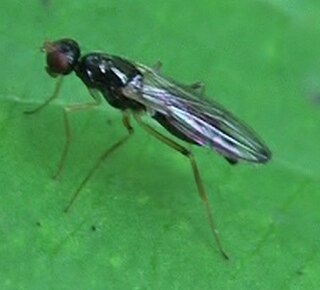
The Strongylophthalmyiidae are a small family of about 80 species of slender, long-legged flies, the majority of which occur in the Oriental and Australasian regions. They are divided into two genera, the monotypic Southeast Asian genus Nartshukia Shatalkin, 1993 and Strongylophthalmyia Heller, 1902. The relationships of the group are obscure; formerly the genus Strongylophthalmyia was classified with the Psilidae, and some recent classifications place it within the Tanypezidae. Little is known of their biology, but many species seem to be associated with rotting bark.

Homoneura is a genus of small flies of the family Lauxaniidae.
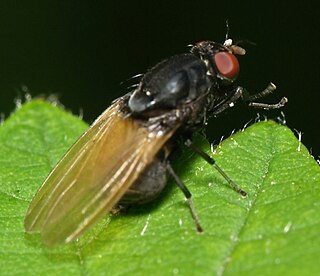
Minettia is a genus of small flies of the family Lauxaniidae. They have almost worldwide distribution, is one of the most species rich genera of the family with more than 120 described species. The Palaearctic is the most diverse with some 56 described species. The genus is divided into 3 subgenera.

Sapromyzosoma is a subgenus of small flies of the family Lauxaniidae.
Aulogastromyia is a genus of small flies of the family Lauxaniidae.
Sciasminettia is a genus of small Palearctic flies of the family Lauxaniidae.
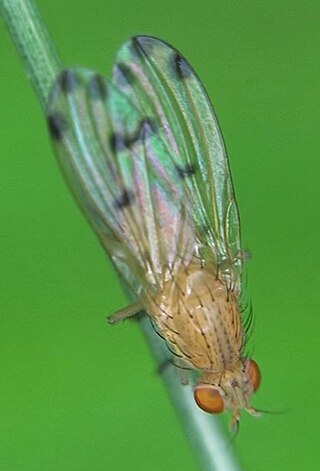
Meiosimyza is a genus of small flies of the family Lauxaniidae.
Hemeromyia is a genus of flies (Diptera).
Meoneura is a genus of carnid flies (Diptera).

Tethina is a genus of beach flies in the family Canacidae. They are found in all terrestrial biogeographic realms.
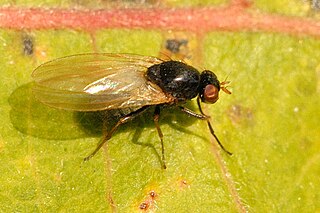
Calliopum simillimum is a species of fly in the family Lauxaniidae. It is found in the Palearctic.
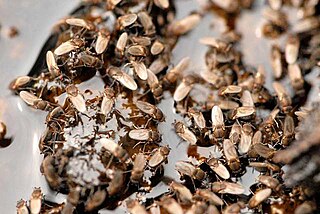
Coproica is a genus of flies belonging to the family Lesser Dung flies.

Schroederella is a genus of flies in the family Heleomyzidae. There are about 14 described species in Schroederella.

Strongylophthalmyia are a genus of slender, long-legged flies, the majority of which occur in the Oriental and Australasian regions.
Claraeola is a genus of flies in the family Pipunculidae.













